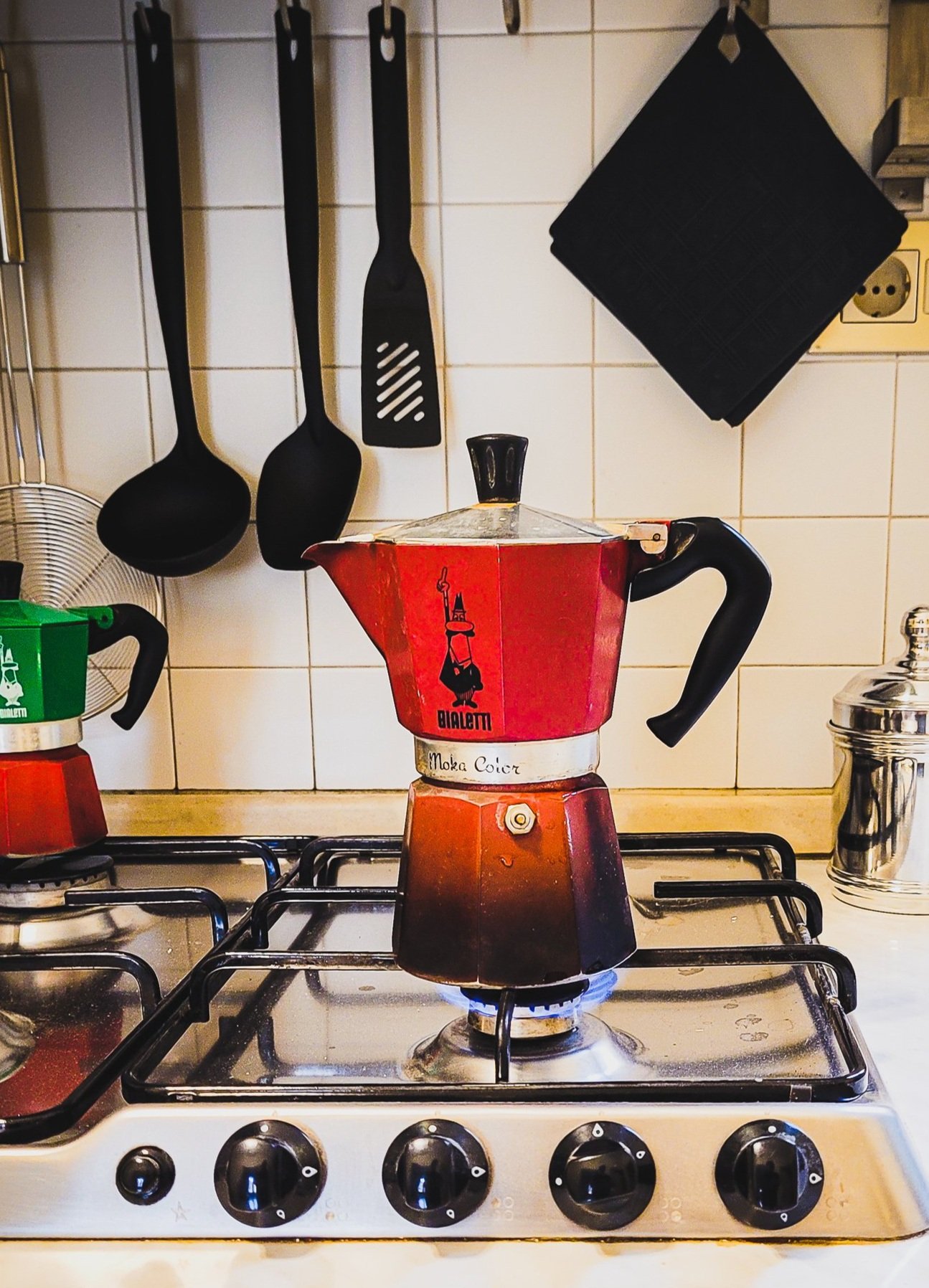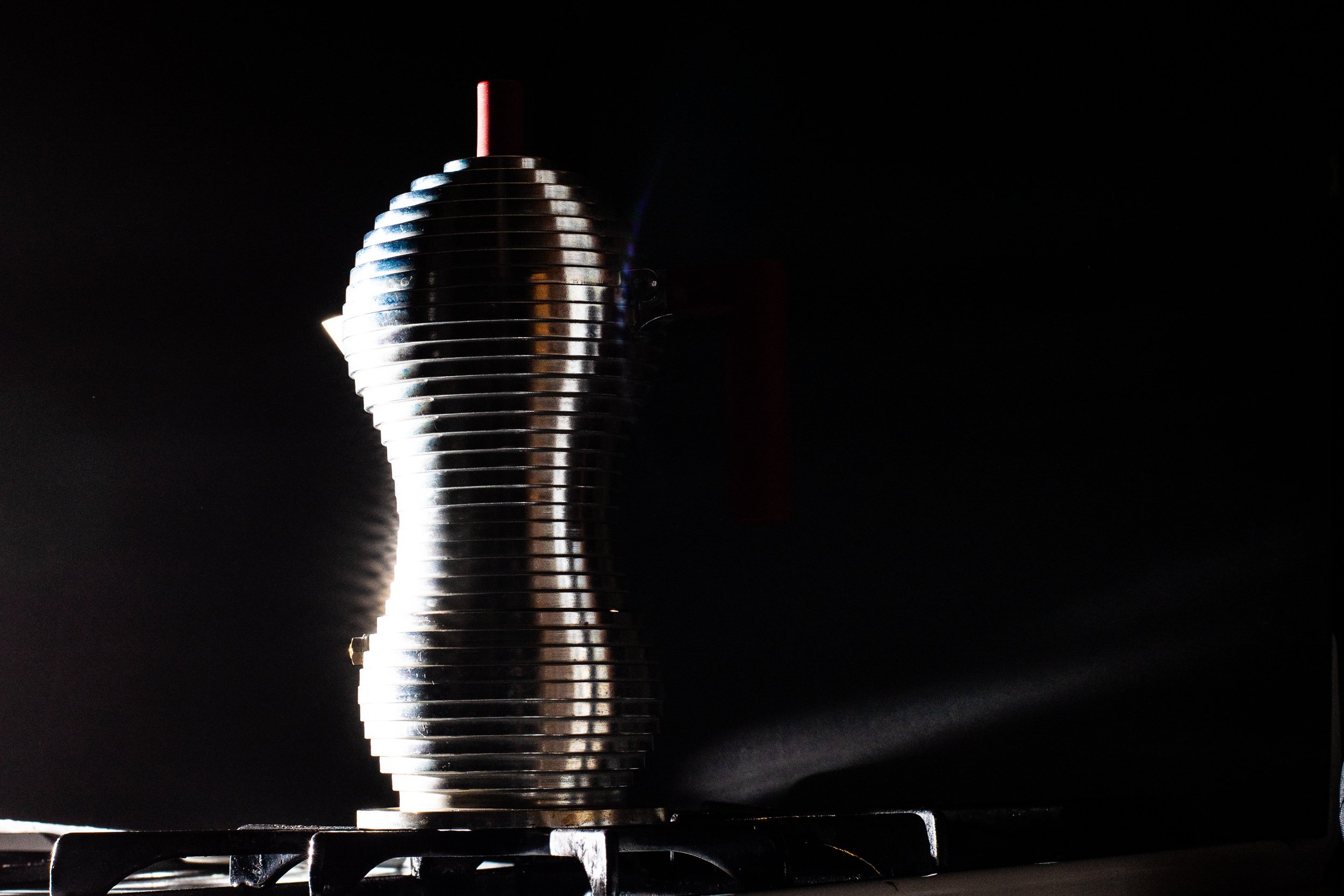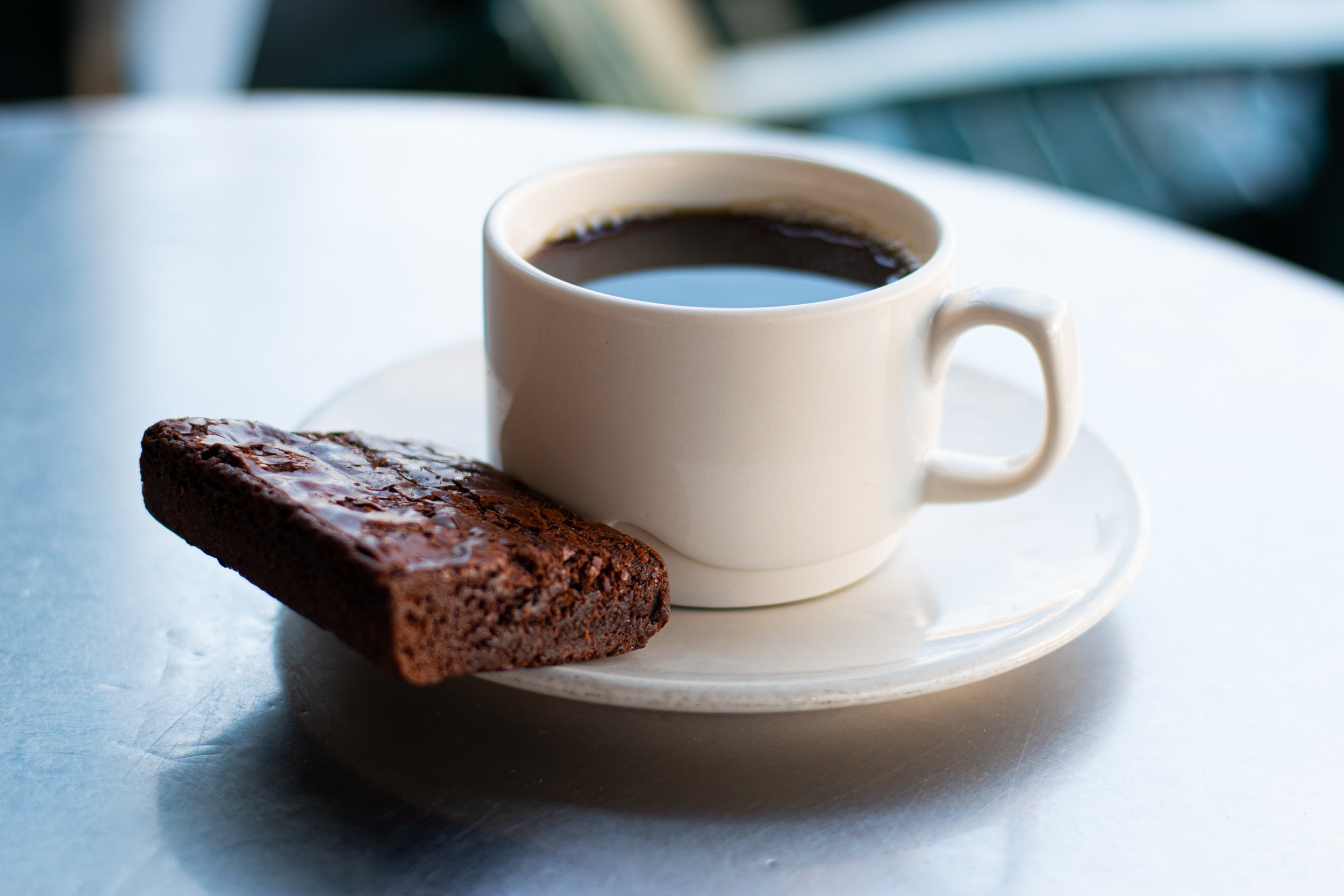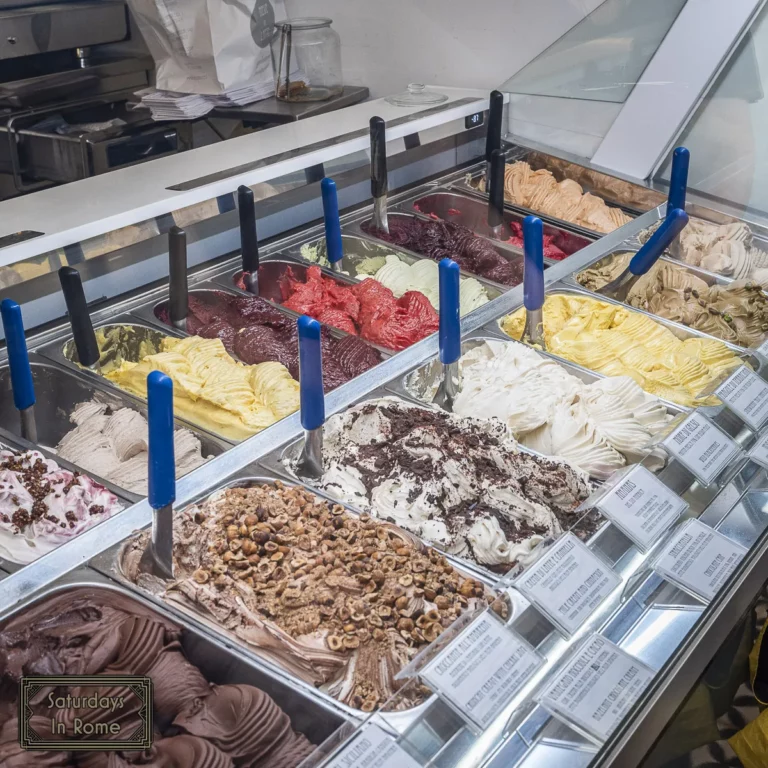Knowing How To Make Italian Coffee At Home Is Worth It!
Knowing how to make Italian coffee at home is easy with this guide and we will show you how it’s done to achieve a perfect stovetop espresso every morning.
Bialetti Moka At Home
Having a delicious cup of Italian coffee in the morning is a part of my daily ritual and has been for some time. We made this such a big part of our lives that we had started an eCommerce site that specialized in selling coffee from across Italy. Don’t worry, this isn’t a sales pitch as we shuttered the site when we moved to Italy.
The way I consume coffee at home has changed a bit over the years. When I drank American roasted coffee I would typically drink a large quantity for breakfast and not drink any more for the rest of the day. Now I have a delicious cup at home made in my Moka and still enjoy additional espresso sized cups during the day if I feel a little sluggish. Italian culture also expects as a sign of good hospitality to offer guests, expected and unexpected, a homemade caffè. This takes me back to my youth when evening visitors were routinely offered a fresh pot of coffee to end the evening.
Bialetti Moka – Silver
The Moka Express is the original stovetop espresso maker and is the Italian way of preparing a delicious coffee that dates back to 1933.
How To Make Italian Coffee On The Stove
I use a Moka at home, and if you are not familiar with it, the Moka has become an iconic part of Italian coffee culture and I believe it is the best Italian stovetop coffee maker available. The Moka is a stovetop percolator, also known as a caffettiera, and the most popular brand was designed and patented in 1933 by Alfonso Bialetti. The Bialetti brand is synonymous with the Moka, although many other manufacturers have created their own versions. The distinctive Bialetti caffettiera is recognized around the world. As an indication of the importance of the Bialetti Moka to Italian culture, the son of the inventor Renato Bialetti was buried in a Moka.
Delicious Espresso in White Cup at Home
A Moka can create a strong cup of coffee but doesn’t truly make espresso because there isn’t the same type of steam and pressure available to it. The crema, the foam made by the steam, doesn’t really exist in a Moka because the pressure isn’t even close to the same.
Sizes Of Italian Stovetop Coffee Maker
Kimbo Espresso Napoletano Coffee
This amazing coffee from Naples is my favorite to enjoy every morning at home. Try it with a Moka and you will love it!
Mokas of all manufacturers generally follow the same design, but their parts typically are not interchangeable. They come in different sizes which range from a single 60ml espresso cup, to a 12 cup giant that would be used when guests arrive. We bought a cartoonishly large version that could probably make a gallon of coffee but also would need an entire package of coffee to fill the funnel. There different styles as well, which include Mokas that drip right into an espresso cup and others that try to heat and foam your milk while the coffee is heating. For me, nothing beats the simplicity of the original.
Cleaning
Every video or blog you see that talks about a Moka all say the same thing, don’t use soap to clean it. This is definitely true! Don’t clean a Moka with dish soap, don’t use a soapy sponge and definitely don’t put one in the dishwasher. You need to use only water to clean the grounds.
A couple of additions to this important rule:
While most people demonstrate the cleaning of a Moka using only their fingers, I’ve also found using a bottle brush to be helpful in getting into the nooks and crannies.
If you feel like there is a buildup of coffee residue inside a hard to reach part, you can also remove the gasket and simply boil all the parts.
Here in Italy, the water has a higher level of minerals in it than was my experience in the US and after a few months you will get a build up of mineral deposits, called calcare. The easiest way to get rid of it is to let the Moka soak in some water with plain white vinegar for as long as you need to. After a good rinse, you should then re-season the Moka.
To season a Moka when it’s new or after it’s been cleaned with vinegar, buy some cheap (i.e. low quality) coffee and boil a few pots to get rid of any residual tastes.
Replacement Parts
After you have been using your Moka for a while, you might feel like it’s time to replace some parts. Typically, the first thing to go is the gasket. It will get too dry and possibly even brittle. You’ll want to buy replacement parts that are made by the Moka manufacturer because even if they look similar, the sizes can vary.
Other parts to consider replacing would be the funnel, the filter plate and the handle. The funnel and the filter plate can get damaged or get a build up of coffee residue that is hard to clean. Replacing these pieces will make your Moka feel like new again. Just be sure to remember to re-season the Moka.
The handle can also be replaced, which I’ve needed to do a couple times over the years. While there can be an unlimited number of reasons for replacing the handle, the two most common for me were:
Tightening the Moka top while holding the handle. These handles are not made to be laterally strong and should not be used to tighten or loosen the pot.
If you use too high of a flame on your stove, the handle can and will melt. Make sure the pot is centered on the burner and the flames do not come up the side of the Moka.
The Pulcina from Alessi
Alternatives
I have been focusing on the Moka, but there are some alternatives for making Italian coffee at home. La Cuccumella is a stovetop coffee maker used most commonly in Naples and it was invented in 1819 by a Frenchman!
Lavazza Qualità Oro Coffee
This delicious coffee comes from the popular Lavazza roasters and once you taste it you will know why it is loved in Italy and beyond!
There are also single cup electric coffee makers, similar to those that you can find in an office. You can buy the same brands of coffee in those little pods in most grocery stores, but why would you? The extra packaging is creating more waste and the complexity of cleaning can’t really be justified for a single cup.
How Coffee Is Made In Italy
The coffee beans used in Italian coffee is important from around the world, like any other roaster. The beans come from Asia, Africa and South America and are imported to Italy. This is when the magic begins. Each coffee roaster has their own process for roasting the beans and this gives coffee a unique taste anywhere you might travel in Italy.
Once you decide on your favorite coffee roaster, you can enjoy the coffee out at a bar where they will typically be using a commercial espresso machine. The taste of Italian coffee coming from a real espresso machine is unequalled, but if you are home, what can you do? You can use a stovetop espresso maker, a single serving coffee maker (think: Keurig) or some other brewing technique. The choices are almost endless.
What Makes Italian Coffee So Good?
In my opinion, the most important reason that Italian coffee is so good is how the coffee is roasted. In Italy, you can enjoy the variety of tastes across the country, within a single region and even across a city. This is truly an artisan craft that you can only find in “specialty” coffee shops in the US, but here in Italy it is everywhere.
When Did Coffee Become Popular In Italy?
There is a lot of conflicting information regarding the origins of coffee in Italy. Some consider the beginning was in the 16th Century, others the 17th and still others the 18th. What isn’t debated is that coffee beans were first cultivated in Ethiopia, which continues to be the home of the best coffee beans in the world.
The Coffee Grind For Making Coffee At Home
If you are ordering coffee that has a different grind depending on the intended coffee maker being used, or if you grind your own, it is important that you know the correct size of the grind. It is smaller than the grind for an American drip coffee maker, but larger than an espresso grind. You definitely want to avoid using an espresso grind because it can clog the filter and blow hot steam out the valve. This will probably scare you the first time you experience it and it will waste the pot. For an estimate, the approximate size is a grain of salt.
How Strong Is Italian Coffee?
The strength of the coffee is indicated on the packaging as it is judged by the roaster.
Caffè Americano?
These aren’t universal or consistent so it would be best to only compare strength ratings within a single roaster’s offerings. For example, my favorite coffee is Espresso Napoletano by Kimbo, which is considered a 12 out of 13 on their strength scale. Our other 250g brick by Lavazza is a 10 out of 10. It seems difficult to compare but I feel pretty certain they both are strong!
Enjoy The Art Of Coffee With These Other Posts
Now that you can answer the question: “How do Italian make coffee at home?“ and you are at home relaxing after making some stovetop espresso, I recommend some of our other posts for your enjoyment:
- The Coffee In Italy Is An Amazing Experience
- Ferrero Pocket Coffee Is How To Enjoy Espresso On The Go!
- Giolitti In Rome Just Might Be My Favorite Coffeeshop
- Sant’Eustachio Il Caffè Is A Rome Coffee Bar You Should Try
- Is La Casa Del Caffè Tazza d’Oro The Best Coffee In Rome?
- How To Clean A Moka Pot Everyday In A Few Easy Steps
- Italian Coffee Culture Is An Experience In Torino!
- The Best Country For Coffee Must Be Italy And This Is Why
- Gran Caffè Gambrinus Is Classic Italian Coffee Culture
- Coffee Bars In Italy Are A Unique Experience You Should Try
- These Italian Coffee Roasters Are The Best In Italy
- Historic Bialetti Sold To Chinese Investors NUO Capital
Enjoy Italian Coffee!
Lastly, learning how to make Italian coffee at home is an experience not to be missed. I’ve taken the simplest approach to enjoying it, but if you really want to understand how seriously it is taken, check out this video from Gambrinus on the right way to do it.













